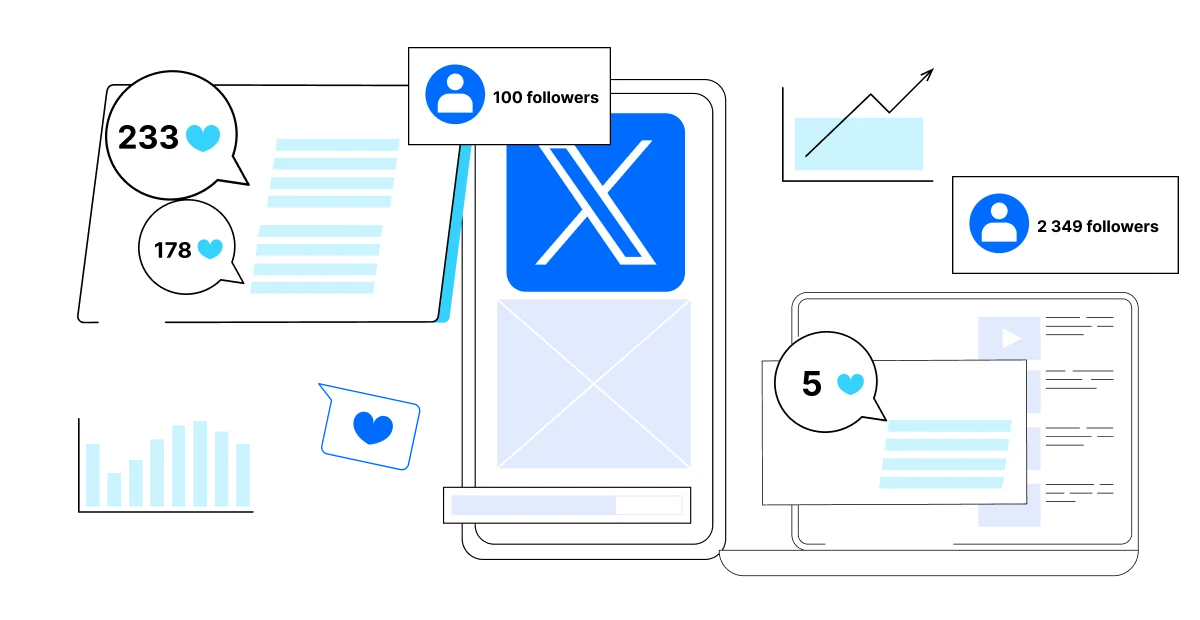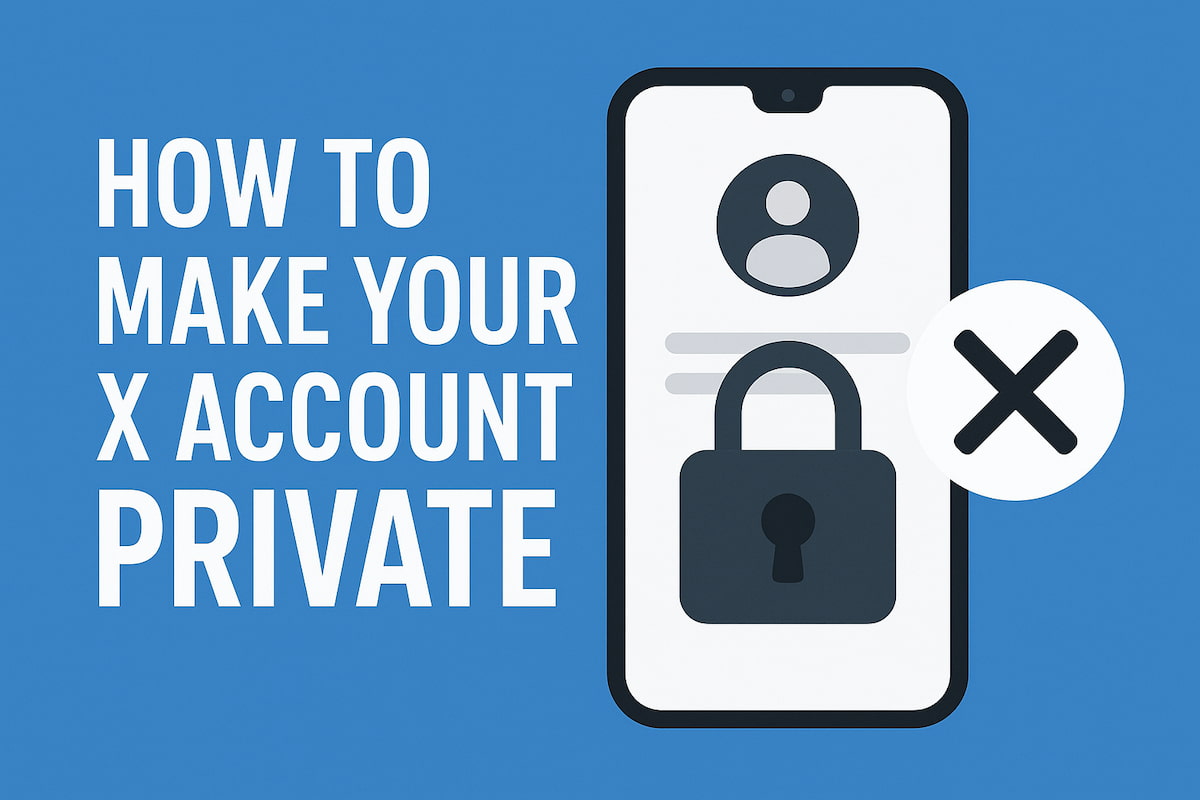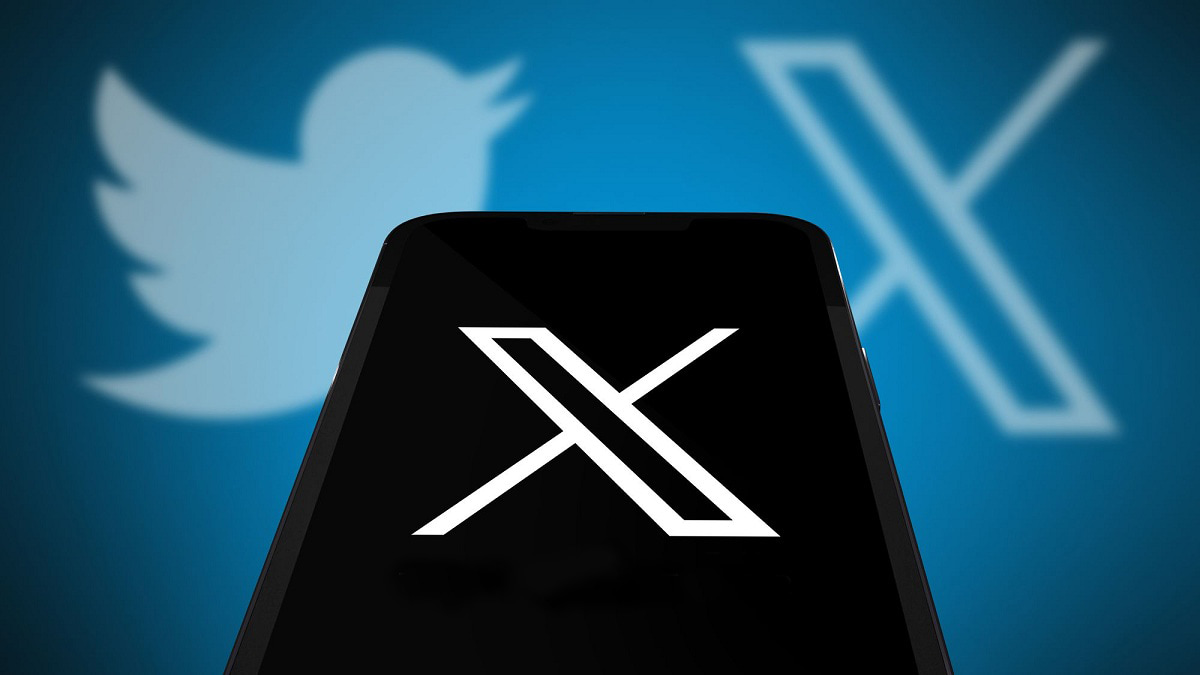Are you obsessed over follower count on Twitter (or should I say X)? You hit refresh, watch it tick up, and there’s this dopamine rush that makes you feel like you’re winning the internet. But … are you really? Or another situation. You open your Twitter app, see that little number, and instantly start judging yourself or your brand. “Only 500 followers? Should we even exist?” Sound familiar?
Here’s the thing: follower count is overrated. Yep, we said it. Sure, having thousands, maybe millions, of followers looks impressive on the surface. But what if half of them aren’t even paying attention? What if they’re all bots and ghost accounts? A big number doesn’t automatically mean you’re killing it.
So, let’s find out why chasing followers is one of the biggest traps on social media, and what actually moves the needle when you need to build a loyal audience on Twitter (or X, or whatever Elon decides to call it next). Trust us, by the end of this, you’ll look at those numbers with a totally different perspective.
Twitter Algorithms and Their Impact on Visibility
Algorithms. We don’t see them and can’t fully figure them out. But they control everything. Twitter (or X) constantly changes its algorithms. If you think your follower count is your biggest asset, we suggest looking at it from a slightly different angle.
Quick note: Follower count is still an important metric, and we’re not saying to ignore it entirely. It’s important to track, but it’s not enough. We’re just offering a different perspective that will actually work for your account’s success.
So, 415 million. That’s the massive crowd of X users. They’re all looking for people to follow or trying to attract more users to their own team.
There was a time when Twitter was simple: whoever followed you, saw your posts. It was fair and straightforward. But in recent years, the platform has shifted toward smart algorithms. Now your posts can either shine in feeds or disappear into complete chaos. And that doesn’t depend on the Twitter follower count. You could have 50,000 followers, but if they’re not liking, commenting, or retweeting, Twitter just stops showing your content.
Frustrating, right?
Now, instead of a chronological feed, algorithmic ones are taking over. Content is chosen based on interests, interactions, and activity. This is the so-called “smart approach.” The visibility of your tweets depends more on the activity and quality of your audience than on its size.
And here’s another “twist” — promoted content. Remember how you used to try different tricks to get your content seen by more people? Now X gives you the option to pay for a bigger reach. But even if you have thousands of followers, without money, your content might not even get a hundred views if it doesn’t match tricky algorithmic criteria.
So algorithms don’t want a lot of followers anymore. They want active followers.
What’s More Important Quality or Quantity?
Imagine this: you have 100,000 followers, and you’re feeling great about it. But when you post something, the reaction is… well, to put it mildly, lackluster. Barely any likes, comments have disappeared, and retweets seem to have gone on vacation. And you start thinking, “How is this happening? I have a huge audience!”
This happens to personal brands and big brands alike. Take the account of the super popular cosmetics brand, Maybelline New York. As soon as we open their page, we immediately go “WOW” because they’ve gathered a crazy 724K followers. Very impressive!
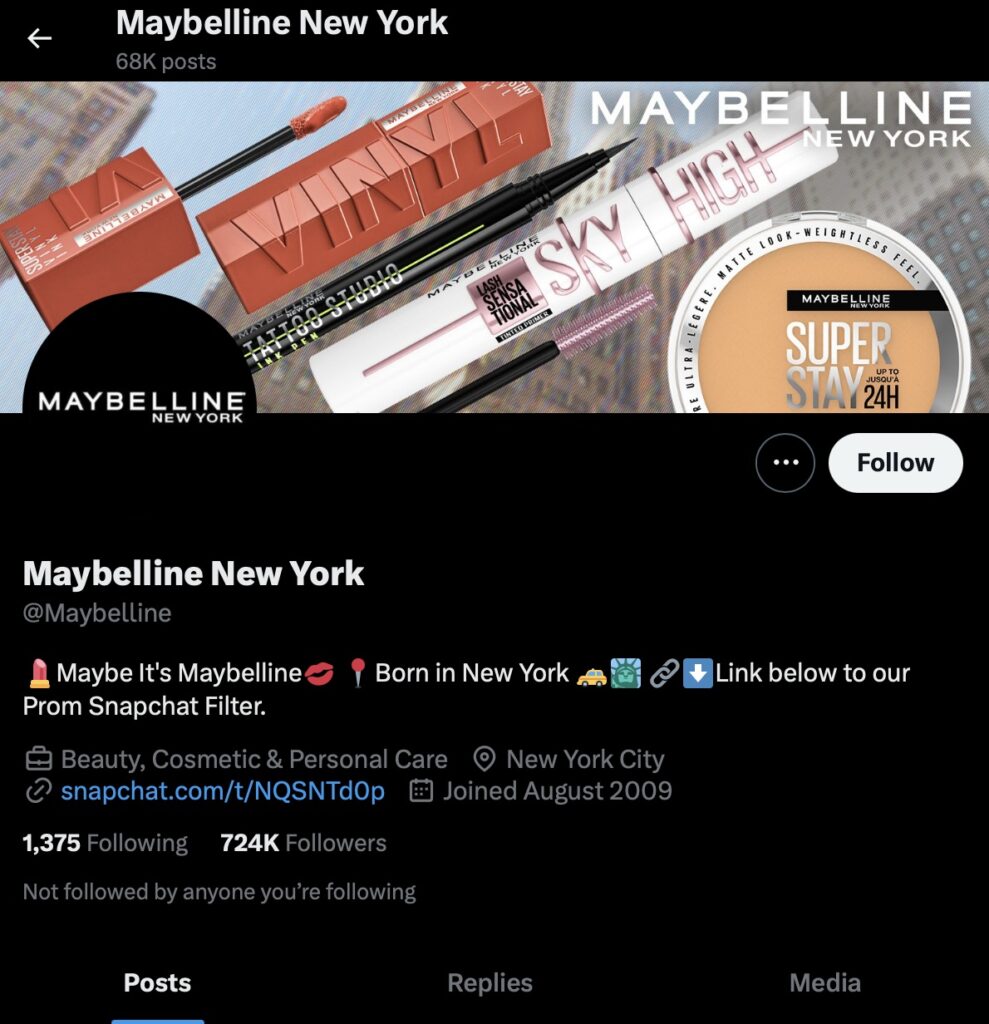
And what about their engagement? You’d think they’re getting tens of thousands of likes and hundreds of comments, right? Not even close!
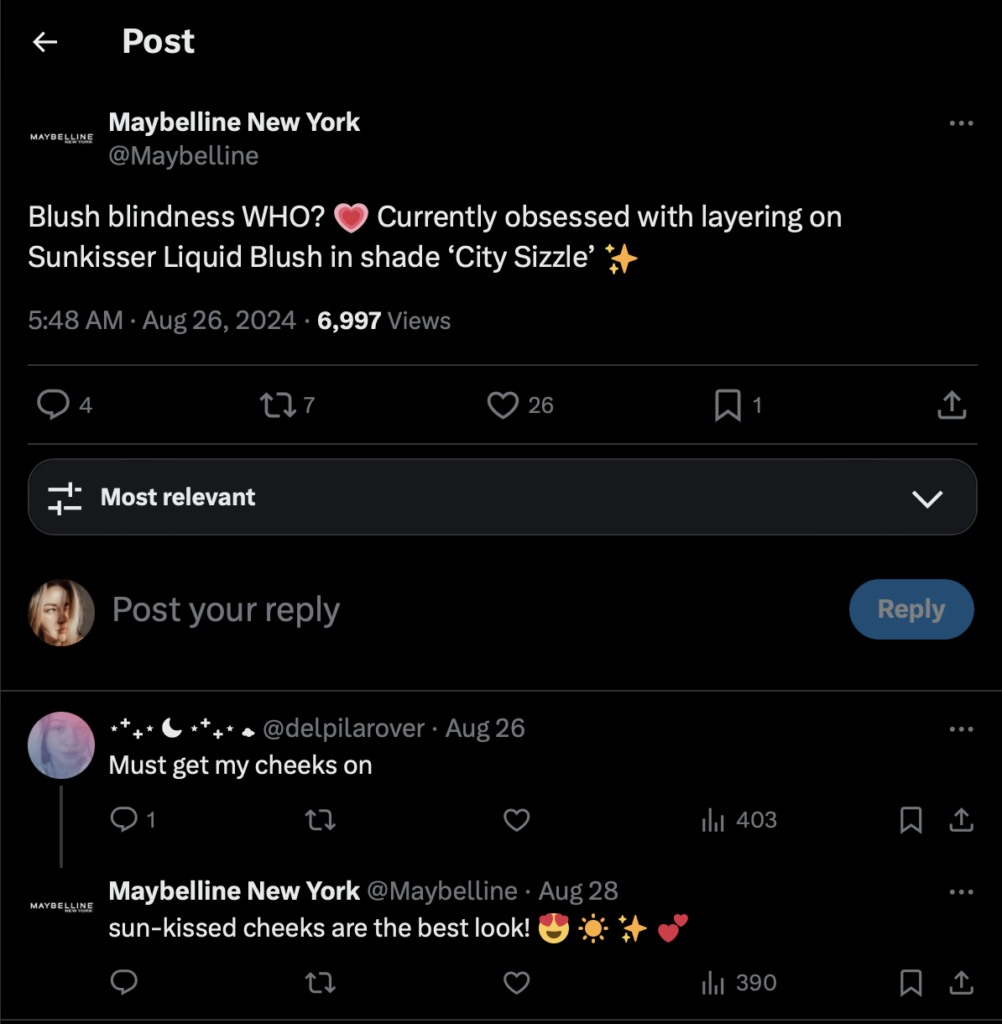
Now, check out a different case: almost half the followers of Maybelline, but every tweet is a mini-explosion. Likes, comments, retweets: all flying at the speed of light. No matter what they post, the audience is reacting, discussing, sharing. What’s their secret? Their followers are truly engaged.
And we’re talking about Fiverr’s profile! Follower count? 456.2K compared to Maybelline New York’s 724K. Engagement?
Their meme posts, for example, are a big hit:



Even their product launches get decent engagement:
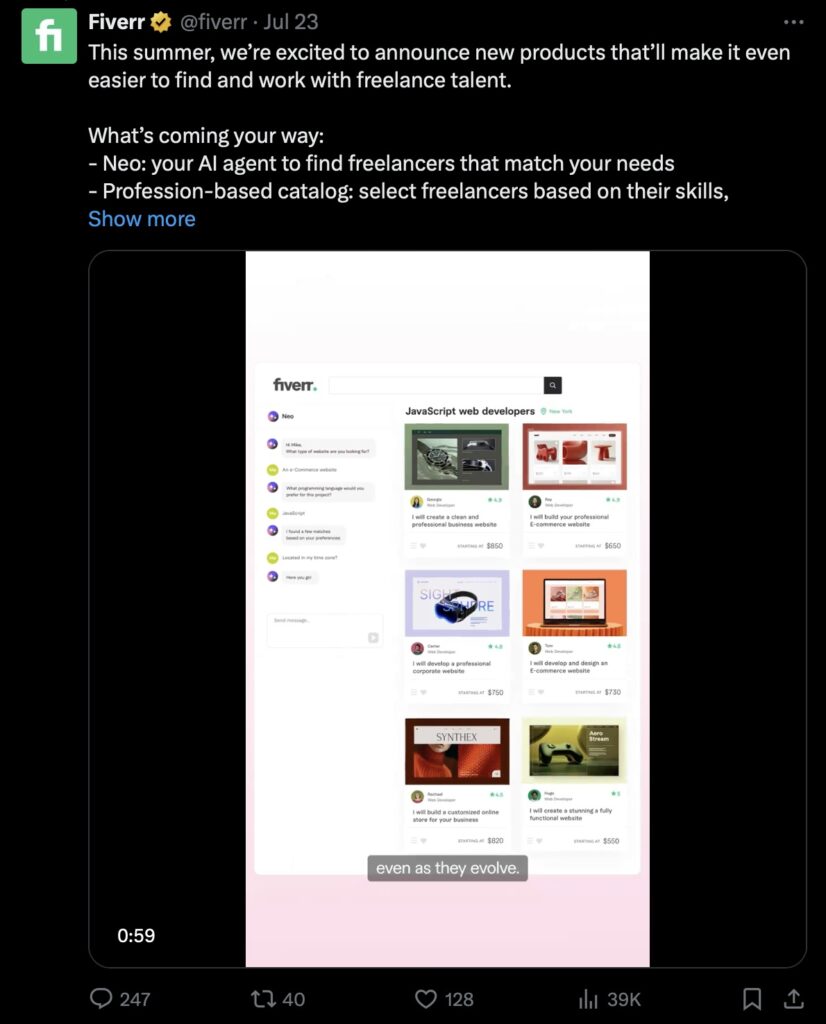
If your audience is small but active, you’re hitting the mark. These people won’t just like your posts — they’ll buy, recommend you to friends, and talk about you everywhere. Brand loyalty is built on interaction and engagement, not just raw numbers.
Organic Growth vs. Paid Strategies: Which to Choose?
Alright, you want to grow on Twitter. And you’ve got two options — play the long, honest game by posting, engaging, and building… or throw a few hundred bucks at it and take off on the wings of paid ads. That second option sounds tempting, maybe even a little romantic, right?
Paid followers are like fast food. Quick, filling, but an hour later, you’re hungry again. The followers come in, the number on your counter goes up, but the engagement… meh. People scroll past your posts like they’re morning email spam. Why? Because you bought their attention, not their interest.
On the other hand, organic growth is like tending to your own garden. It’s slow, but every post is a seed. You post consistently, respond to comments, join conversations, and find your voice. Sure, it takes time, effort, and patience, but the result is real, and more importantly, lasting.
Followers who come to you organically stick around because they’re genuinely interested.
That’s the main difference. Paid strategies might quickly pump up your follower count, but they don’t create engagement. And without engagement, your account is just a nice storefront with nothing happening behind it. Tweets with no likes, no discussions, no soul.
You might think, “Okay, but can’t I combine the two, right?” And yeah, it’s possible. No one’s saying you can’t use ads to bring in new people. There are different types of ads, of course. You could pay Twitter to give your account more visibility, making it more noticeable to other users. That’s fine. Or you could buy a bunch of bot followers who’ll just sit there like dead weight.
But here’s what’s important: don’t focus solely on Twitter follower count. It’s better to spend money promoting specific content: helpful posts, interesting campaigns, events. That’ll attract people who actually get involved.
So, what about an organic strategy in the long run? Here are a few key tips:
- Be consistent. Regular posts create a routine for your followers. You become part of their day;
- Reply to comments. Sounds simple, but it matters. People want to feel heard;
- Join trends, but wisely. Don’t jump on every hype train just for attention. Engage when it makes sense for your brand;
- Create valuable content. People love sharing things that help or entertain them;
- Don’t be afraid to be yourself. Authenticity is what people value most on social media now. Be a brand that’s worth talking to.
Engagement Metrics
Imagine looking at your account and seeing just one number — your follower count. Big, impressive number. But honestly, it won’t tell you what’s really going on with your audience. What’s more interesting is digging deeper into the data that shows the real value of what you’re posting.
Take engagement rate, for example. It’s not just likes. Engagement rate = likes in the context of how many people actually saw your post. Here are two tweets: one seen by 1,000 people and liked 100 times, and another seen by 10,000 people but also liked 100 times. The difference is obvious, right? In the first case, your content resonated 10 times better. Engagement shows how much your tweet connects with those who see it. The higher the number, the better your content is performing.
Now, let’s talk about click-through rate (CTR). This metric shows how your tweets are driving people to take action. Likes are one thing, but getting clicks on links is a whole new level. CTR tells you that your tweets are sparking the desire to do something more (visiting a site, reading an article, or checking out a product). After all, the goal isn’t just to entertain your followers, but to push them toward real action, right?
And, of course, there’s the conversation rate. If people are commenting on your posts, joining in on discussions, it’s a sign that you’re actually creating a space for engagement. And when discussions start, it’s a signal to the X algorithm that your content is worth showing to a wider audience. Twitter loves promoting posts that stir up conversations.
There are tons of tools, both built-in and third-party, that help you check out all these metrics and figure out what’s working and what’s not.
Want a practical example? A small startup with 2,000 followers started focusing on engagement instead of just new followers. After some testing, they realized that one type of content (stories from real users) got the most comments and clicks. They doubled down on that, and their sales doubled too, without spending a dime on paid promos. Their follower count also jumped by 10%.
The Risks of Fake Followers and Bots
Some accounts really raise a lot of questions. Let’s say we check out our competitor’s X account and notice they suddenly have 50,000 followers, but their posts get fewer likes than our first cat meme tweet. Could they have just gotten lucky with viral content? Maybe. But more likely, it’s just bots and fake accounts.
We’re not the only ones who notice this. Twitter (or X) does too. X’s policy on bots has become stricter. Recently, the platform has been doing massive clean-ups, deleting fake and bot accounts. This might cause your follower count to drop suddenly. An example? Look no further than X’s owner, Elon Musk.
Here’s Twitter announcing a massive purge of bots.
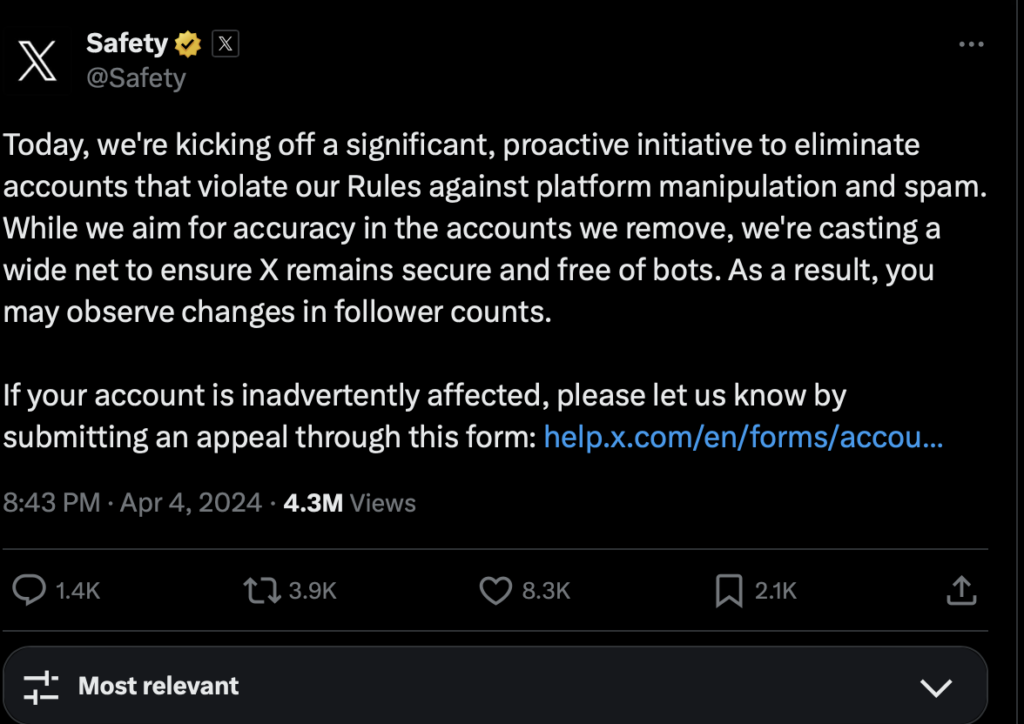
Just one day later, Elon Musk lost over 40,000 followers. And he’s not alone. Take a look at the chart:
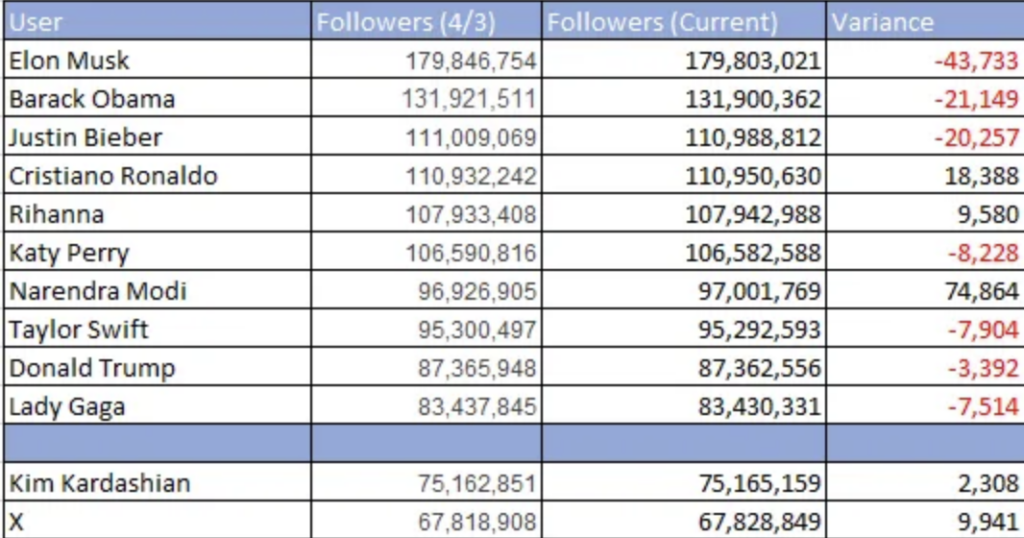
How can you tell if you have fake followers? Here are a few signs to watch out for:
- Lack of Activity. If an account isn’t posting anything, not interacting with others, and looks like a fake profile, it’s likely a bot;
- Anomalous Statistics. If you have 10,000 followers but only 5 likes on a post, that’s suspicious;
- Profile Pictures and Names. Fake accounts often have generic or suspicious-looking photos and names that seem like random strings of letters. So if someone with a name like “xpotrurbfj123” is following you, it might be time to clean house.
What to do?
First of all, there are specialized services that help identify bots and fake accounts. We’ll talk more about these later.
Secondly, If someone isn’t engaging with your content, it might be worth removing them to avoid skewing your stats.
Lastly, you can always review profiles manually. This can be a tedious process, but it helps ensure the quality of your audience.
Fake followers are a huge problem for your stats. But first of all, they can harm your reputation.
How to Really Boost Your Followers
So, you want more followers to make your competitors sweat as they try to catch up with your success on X. That’s a totally understandable goal. But hold up, let’s forget about buying followers right away. We’ve already discussed how that can seriously harm your account. So how do you attract real, engaged people?
Create a Content Schedule
Twitter can sometimes feel like total chaos. Consistency isn’t boring. Don’t leave your account inactive for weeks and then suddenly drop a ton of posts. Make a plan and stick to it. Let your followers know that every Tuesday and Friday they can expect new content. Regularity helps people get used to your presence.
If you’ve ever managed social media (not just Twitter, but any platform), you know that nothing kills engagement faster than disappearing and reappearing.
Engage with Your Followers
If someone comments on your tweet, reply! Show interest in your audience’s opinions, join discussions, and give likes and retweets. This engagement builds a real connection.
We’re big fans of what Fiverr does on X. Besides their effective crisis management, here’s how they engage with their audience:
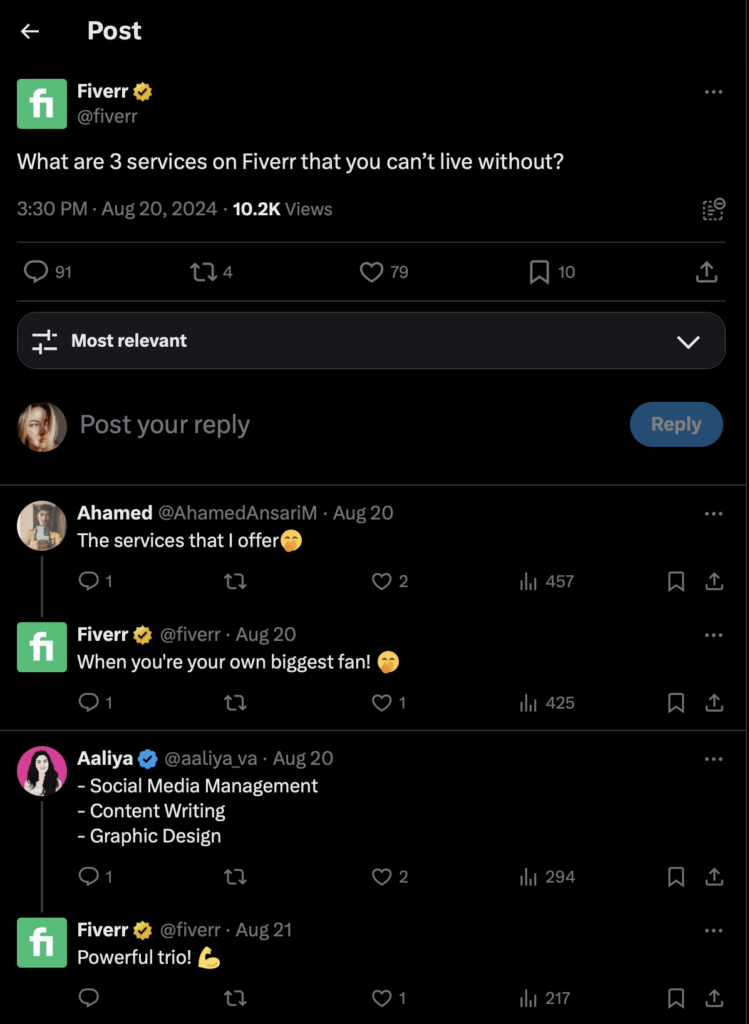
Try Twitter Spaces
Twitter Spaces is a fantastic way to connect with your followers in real time. Host your own sessions and make them engaging. Sure, it’s sometimes more challenging than just posting a single tweet with 280 characters, but it’s worth it, trust us.
And don’t forget about trends: join discussions and share your thoughts ( but only when they relate to your topic). This keeps your content relevant and lively.
Working with Influencers
Need to expand your audience quickly? Find influential people in your niche and propose a collaboration. No, this isn’t just for big brands, in case that crossed your mind. The size of your brand doesn’t matter if you have a solid influencer strategy and a budget for it.
This could be a joint project, a mention, or even just an exchange of ideas, whatever works. Influencers can bring you an audience that’s really interested in your content.
Encourage Your Followers to Create Content
Launch contests or promotions where your followers can showcase how they use your product. Give them a reason to create content related to your brand. This will generate a ton of great ideas for your posts. UGC (user-generated content) works exceptionally well in 2025.
Hashtags
Choose hashtags that genuinely work for your niche. Don’t clutter your posts with dozens of hashtags; pick 1-2 that can really attract your target audience. Well-chosen hashtags can make your content visible to those who are truly interested in what you’re sharing. But don’t go overboard. Too many hashtags can make your posts look spammy, and that can hurt your reach.
Tools for Managing Your Account
First, consider getting a subscription to X Premium to start monitoring your stats and analytics. For many, this might be enough.
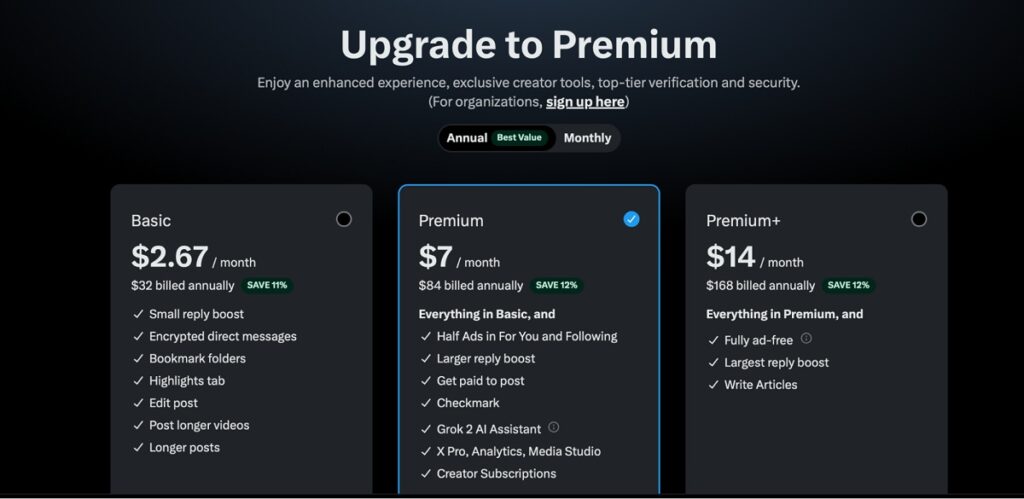
If not, there are plenty of solid third-party services. Followerwonk and HypeAuditor are good options we’ll discuss in more detail later.
It’s also wise to look into platforms and tools for scheduling posts. Check out Buffer or Later. And don’t forget about TweetDeck from Twitter itself. It’s convenient and lets you track multiple feeds while managing your tweets from a single panel.
Tools for Audience Analysis and Identifying Fake Accounts on Twitter
We’ve established that you can’t just throw up content and wait for followers to flood in on Twitter. You need to figure out who’s following you and whether there are any fake accounts among them. Here are some great tools for that:
- Followerwonk. This tool doesn’t just show you follower counts; it digs into their activity and quality. Want to know which of your followers are genuinely engaged with your content? Followerwonk analyzes profiles and helps you understand who’s worth keeping around;
- Social Blade. Social Blade is an analytics tool for Twitter that tracks changes in your follower count and engagement. If you notice sharp spikes or drops, Social Blade helps identify what’s happening and what triggered those changes;
- HypeAuditor. HypeAuditor checks how real your followers are and helps find fake accounts. If you don’t want to be misled by numbers, this tool is your must-have;
- Botometer. If you suspect some of your followers are just bots, Botometer can help clarify that. It analyzes how automated the accounts seem and helps you clean your audience of fake profiles.
Manually monitoring your audience is a nightmare. So keep these tools in mind if you want to understand your audience better and, most importantly, maintain its quality.
Conclusion
So, we’ve covered the basics and explored what follower count is and how to boost it. But remember, Twitter isn’t just numbers, but real conversations and engagement.
Yes, big numbers can be impressive, but if your followers aren’t interacting with your content, it’s pointless. Build relationships, engage, and the numbers will follow naturally.
In the end, it’s your unique voice and approach that will make your account truly successful.

